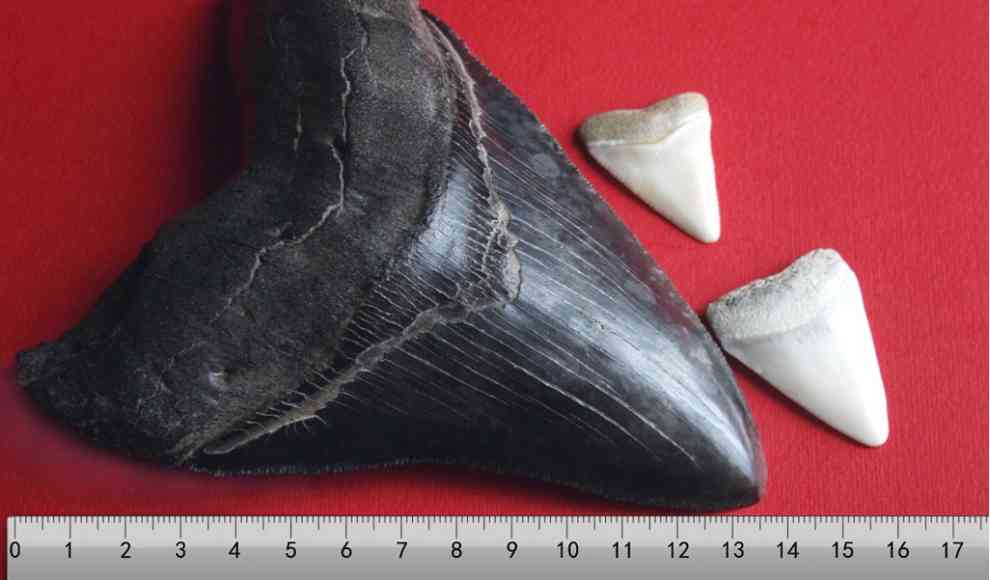The Megalodon, a prehistoric shark that lived 23 to 3 million years ago, was much larger than previously thought, according to a new study by scientists at Swansea University. Using a computer model that included the dimensions of five living shark species with similar physiological characteristics to the Megalodon, the researchers were able to reconstruct the actual size of the extinct predator. The results of the model calculation show that the Megalodon could grow up to 16 meters long and weigh between 50 and 100 tons, making it one of the largest predators to have ever lived.
The Megalodon was a massive creature that relied on energy-rich food to survive. Its bite force of 8,200 Newtons was more than a hundred times stronger than that of a human, and it mainly preyed on large animals such as other sharks and small whales. Even as juveniles, Megalodons were larger than many of today’s shark species, with a length of three meters at birth. However, the Megalodon likely went extinct due to climate change, which caused its prey to die out. The emergence of the smaller and more adaptable Great White Shark may have also contributed to the Megalodon’s demise.
This new study sheds light on the true size of the Megalodon, which was previously estimated based on the size of its teeth. The use of a computer model that included living shark species with similar characteristics to the Megalodon allowed for more accurate size estimates. The findings of this study provide a better understanding of the prehistoric predator and its role in the ocean’s ecosystem millions of years ago.










